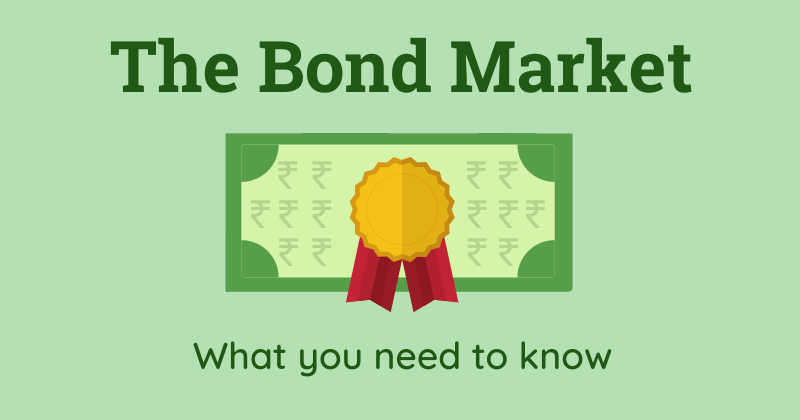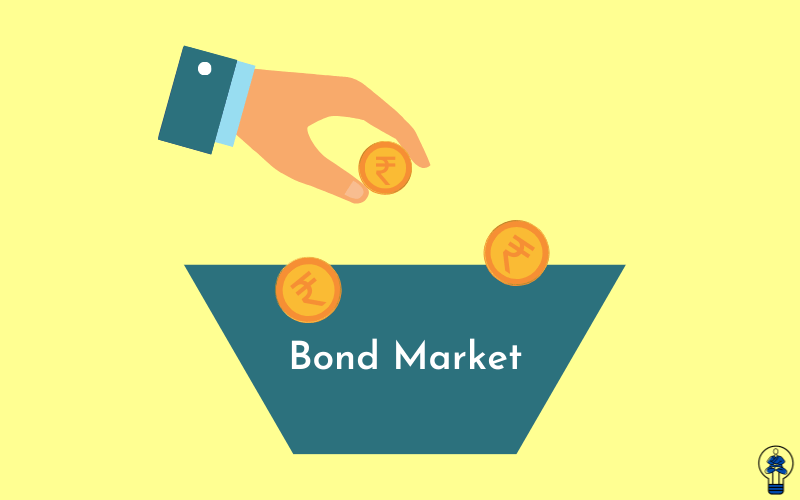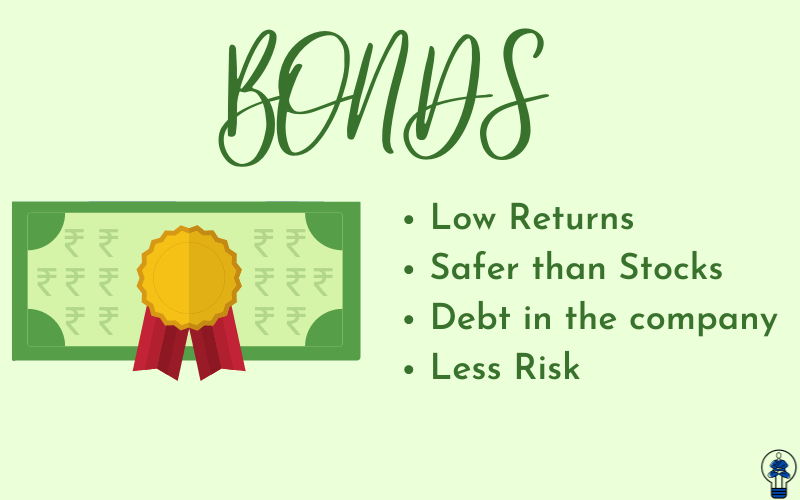The Bond Market: All you need to know

This article may contain affiliate links. If you make a purchase using my links, I’ll earn a small commission at no extra cost to you. I appreciate your support!
When corporations or governments need money for growth and expansion, one way to raise money is in the form of bonds.
The Bond market is a place where investors go to buy and sell debt securities issued by corporations and governments.
Basically, buying a bond means you are lending your money to the government or a corporation for a set period of time and for a fixed rate of interest on your money – it works the same way a fixed deposit account works in your bank.
Bonds are considered safer than stocks because they have less risk as most bonds are backed by the government which means returns are guaranteed and secure.
It also provides income to the investor on a consistent basis depending on the type of bonds the investor purchases.
Two Types Of Bond Markets
1. Primary Market
When companies go to raise funds for the first time in the form of bonds, they enter the primary market. Here investors buy bonds at fixed prices from the companies and governments.
The primary market is the place where securities are created. The most important difference to understand about the primary market is that investors can buy directly from issuers of bonds (company/government). Here the issuer transacts with the investors directly.
2. Secondary Market
The secondary bond market is a marketplace where investors trade (buy and sell) bonds to earn a profit.
The secondary market is the place where securities are further traded by investors. The most important difference in the secondary bond market is that investors buy and sell bonds among themselves.
Here the issuer does not interfere with the investors. If you want to buy bonds from the LIC company in the secondary market, you are dealing with other investors who have LIC shares and not the LIC company itself.
5 Types Of Bonds
1. Central Government bonds
Bonds issued by the central government to raise funds are called Central Government Bonds.
They are issued by the RBI on behalf of the government. These are issued when the government faces a liquidity crisis or needs finance to meet infrastructure development in the country.
Read More >>> 45 Personal Finance Tips For Your Financial Well-Being
These are by far the safest since they are backed by the government and will surely be repaid on maturity.
2. State Government bonds
These bonds are issued by the state government to raise funds for that particular state. They generally raise money to meet fiscal deficits, for financing a project or for the development of their state.
They are also considered safe investments as they are also backed by the government, thus making them low-risk investments.
3. Public Sector bonds
When bonds are issued by highly reputable public sector companies it is known as public sector bonds. Public sector companies (PSUs) are those companies where majority shares are owned by the government.
These bonds are also preferred as they are partly government-owned meaning the risk is low.
4. Tax-free bonds
These are probably the best types of bonds you should have in your portfolio.
Companies such as National Hydroelectric Power Corporation (NHPC), National Thermal Power Corporation (NTPC), Indian Railway Finance Corporation, and National Highway Association Of India (NHAI) issue tax-free bonds. The interest earned on these bonds is 100% tax-free for the investors.
That’s why many investors choose tax-free bonds over other bonds in the bond market.
The only con with tax-free bonds is that they offer lower interest rates than other bonds as they offer long-term capital gains tax to the investors. But they still prove to be the best purchase as taxes on bonds in the long term can cut a lot of your profits.
5. Corporate bonds
Corporate bonds are much riskier than any other type of bond mainly because it’s not government-owned bonds. It means that if the company performs badly, you might not get your money back.
Before investing in corporate bonds you should do complete research on the company’s track records to ascertain the risks involved. Most corporate companies pay during maturity along with predefined interest.
How To Invest In The Bond Market

You can buy Government bonds in India using an app based on the National Stock Exchange (NSE). It’s called “NSE goBid” and is available both on Android and iOS devices.
Wait, before you jump in to buy bonds, you need to complete the registration process. Don’t worry, it’s all online so you can easily do that.
Once registration is completed, you can find various government bonds on the dashboard and choose the one you like.
You can buy corporate bonds using trading or Demat a/c or through specific commercial banks or you can visit the company’s branch office to discuss purchasing the bonds.
4 Risks Associated With Bonds
Bonds are considered to be a great investment when compared to stocks as they are less riskier and provide steady returns. However, every investment has some type of risk involved. Investors need to be aware of the risks associated with bonds.
There are 4 types of risks that could affect your hard-earned profits.
1. Inflation risk
When an investor purchases a bond, he or she agrees to receive a rate of return that can be fixed or variable and is predetermined at the time of purchase.
But what happens when inflation rises more than it normally would and the rate of inflation would become more than our return on investments (bonds)?
We will see negative returns on our investments.
For instance, let’s say Peter purchases some bonds at an agreed 4% rate of return and the rate of inflation rises to 4.5% in that period. This means Peter’s actual return on investment is -0.5%.
2. Interest rate risk
There is an indirect relationship between interest rates and bonds. When Interest rates rise, bond prices fall and when bond prices rise, interest rates fall.
This is because when interest rates are on a decline, investors will buy more bonds to make more money.
Investors need to make sure they don’t sell their bonds when Interest rates are high as they will sell for less than what they paid for.
3. Market risk
There is always a slight possibility of the entire bond market declining. If that happens the value of your bond, however valuable or trustworthy the company or government might be, will reduce and may lead to losses.
Thus an investor must always be prepared and take measures to time the market and know when the market can crash, thus selling his or her bonds before making a loss.
4. Credit risk
When investors purchase a bond, they are actually loaning money to a corporation or the government for a fixed period of time at a predetermined rate of return. At the end of the period, the original amount invested plus the interest rate must be paid to the investor.
What many investors miss is that corporate bonds aren’t guaranteed by the government, but it depends on the faith and trust of the company towards its investors. Simply put, if the company is unable to pay the debt, you won’t get your money back.
You need to check the company’s cash flow, assets, and expenses statement to ascertain whether they might be defaulters or not before purchasing corporate bonds. Government bonds are guaranteed and thus there is barely any risk in government bonds.
How To Manage Risk Effectively
There are two simple ways to minimize and manage your risks.
1. Diversify your Bonds
Just as you would diversify your stocks, you need to diversify your bonds. Why? That way you get maximum returns. Choose a variety of bonds with different features, maturity dates, and rates of return.
Having a mix ensures you get a good return on your investments. The mix could include government and corporate bonds, a few risky bonds and a few safe bonds is the best approach to diversifying your bonds.
2. Bond laddering
Bond laddering is a smart way to minimize your risk. It’s simply purchasing your bonds with different maturity dates so that the maturity date is when the interest rates are low.
This method averages your interest rate thus giving you better returns. The basic idea is to spread the risk along with different interest rates.
For example, Vishal purchased 3 bonds with maturity dates of 1st June, 24th October, and 15th January respectively. His first bond matured (1st June) when interest rates were low, second and third bonds matured when interest rates were high. If all 3 bonds have a maturity date of 1st June, he would get a low rate of return on all 3 bonds.
Key Takeaways

When you invest in bonds, you actually lend money to organizations that need money for expansion or for meeting their fiscal deficits.
When Bonds mature, the issuer of bonds (organizations) pays you the original amount known as principal and fixed interest on the amount invested at regular intervals during the bond period. The interest earned is the profit made by the investors.
Why prefer Bonds?
- They are better than stocks in terms of risk.
- Pays you income at regular intervals of time.
The Best time to invest in Bonds is when the bond market is low, meaning the interest rates on bonds are lower than usual. Thus by the time your bond matures, you will earn better as interest rates keep fluctuating and will increase thus making a profit for the investor.
Have you made any investments in the Bond Market yet? Why do you like or dislike Bonds? Let’s have a debate in the comments below.
Have you enjoyed this post? If so, you might want to subscribe to my newsletter. It usually contains life lessons and money-related topics, some interesting observations, links to articles or books I’ve read, and tips to be a better person. If you’re interested in these things then subscribing will be simply wonderful 🙂 PS: Subscribe and Get your Freebie below!
Also, I’m a YouTuber now! If you’re interested in Pinterest Marketing, Blogging, or business-related things, Subscribe to my Channel and I’ll see you in the comments!